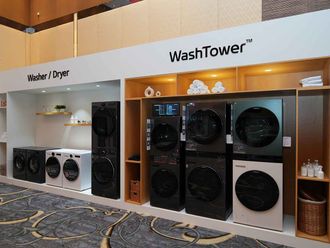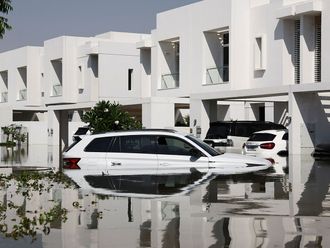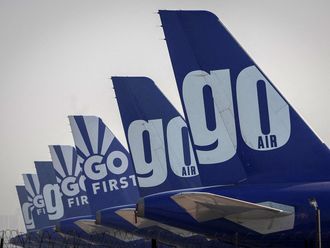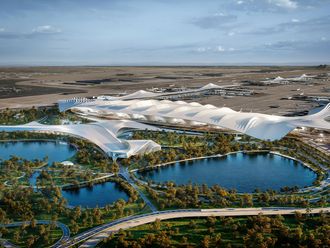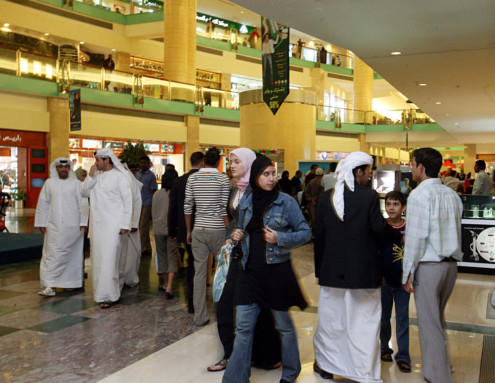
Dubai: Retailers are banging on the doors of mall managements for a possible store location. Their entreaties cutting no ice with the managements who are enjoying full occupancy at their mall properties. Even for those retailers who have a secured location, they will need to pay more to retain the privilege as rentals go up by an average 15 per cent.
Surely we are talking about Dubai’s retail space, aren’t we? While all these conditions do exist in Dubai, much the same is happening in Abu Dhabi, albeit operating on another set of dynamics. While the emirate’s residential space remains turgid and demand for office space shows gains in small calibrations, the retail sector has been the standout performer.
Abu Dhabi city’s existing malls — some of them have gone through extensive make-overs to make them compelling attractions — have caught this wave to reposition themselves for retailers and shoppers alike. “In the past there was this huge gap in the quality of experience as well as the options a mall in Abu Dhabi could offer vis-à-vis Dubai’s,” said V. Nandakumar, spokesperson for the Emke Group which manages a portfolio of seven in-city malls in the emirate through a subsidiary.
“The recent round of revamps that city malls went through, and not just those managed by us, was principally addressed to make them relevant in today’s retail environment. When that happened the gaps got automatically filled and set off the renaissance in Abu Dhabi’s retail sector.”
When a word like renaissance is used, it would suggest that the arc of the turnaround in Abu Dhabi’s retail space is at once dramatic and far-reaching. It has. Managements of existing mall properties started on expansion works during 2009-10, inarguably one of the toughest phases the retail sector has gone through in recent history.
They did so knowing full well that massive and swanky new retail capacities were being added by way of Yas Mall, currently in the home run to its opening, and Dalma Mall, which opened in 2010.
And then the perfect storm broke. While existing malls went about with their expansion, retail groups were at the same time perfecting strategies to get more out of Abu Dhabi by way of better locations or refitting their existing ones. Even after the Dalma Mall opening, there was still a significant surplus of retailers chasing limited new capacity.
“This was the precise time when the older city malls came back into strong reckoning – retailers who were never represented in the city before wanted a location and many were willing to pay a premium to achieve that,” said Nandakumar. “The market also saw recently created residential communities exerting their influence on retail and entertainment sales.”
According to the property consultancy CBRE, city-centric locations such as Al Wahda Mall, Abu Dhabi Mall and Marina Mall are “close to 100 per cent occupancy”, while “it is interesting to note that we are not seeing this same trend replicated for many of the malls located outside of the city centre, with the likes of Dalma Mall and Bawabat Al Sharq Mall having a little more difficulty in building their occupancy rates,” said Mathew Green, the regional head of research and consultancy at the firm.
“With a significant volume of new supply set to be delivered over the next three to five years, we are likely to see a highly polarised market emerge, with growing differentials in occupancy and rental performance dependent on the specific location and positioning of the centre.”
The surge in retailer interest for mall locations in Abu Dhabi has got strong fundamentals. While most of the established brands are already there, many emerging labels had so far limited themselves to Dubai. These names are seeing growth patterns stabilise at their Dubai stores and now see Abu Dhabi as the logical place to seek higher numbers.
“For the moment there aren’t many untapped options available to retailers seeking organic growth in Dubai, all possible locations would have a store yielding a certain growth percentage each year unless that outlet is at The Dubai Mall or Mall of the Emirates, which attract heavy tourist traffic,” said the CEO of a high-end accessory brand. “No retailer would want that, for them the option is Abu Dhabi.”
On such a demand-supply equation, mall owners can ask and get what they want. “Premium rates will be paid by retailers to get into well-managed schemes even in periods of stable demand,” said Andrew Goodwin, director of real estate at Cornerstone Investment & Real Estate.
“Existing malls in Abu Dhabi saw a lot of growth in supply in 2008-09 during a difficult time; they leased despite the economic climate and as they become established and the tenant mix improved they are able to achieve higher rents as would be normal in [such] an environment.
Abu Dhabi Mall, in particular, has made a lot of changes and used the period well to achieve improvements which should continue to show results for them.”
Indeed, the mix of retail and entertainment options has changed for the better across Abu Dhabi’s mall landscape. New capacity creation has aided the process along, which means that city residents — and visitors — now do have a lot to choose from. Some of the upcoming community malls have gone so far as to develop its leisure and entertainment offerings as fully-fledged visitor magnets by themselves.
Nandakumar sees new retail possibilities in the Western Region – “Areas such as Ruwais or Gayathi have possibilities for a natural expansion of our interests, either by building our own malls or managing on behalf of others,” he said. “The capacity build up Abu Dhabi is witnessing has got good legs.”



